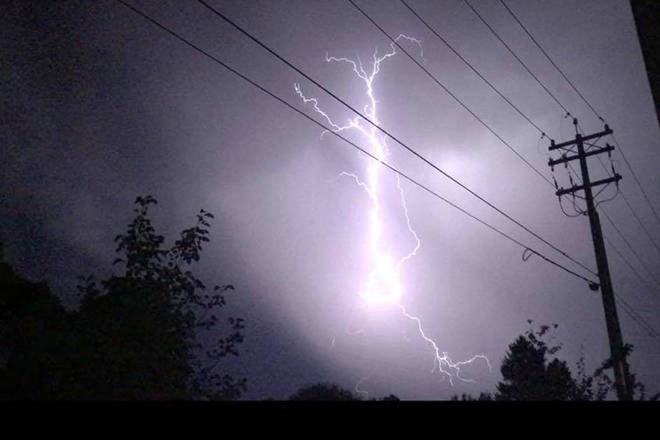Wind, rain and lightning took down branches and trees Tuesday night, leaving 2,174 residences in the Salmon Arm area without power, according to BC Hydro.
As of 7:30 p.m., the power went out in a large area on both sides of Highway 97B, stretching from South Canoe all the way south to Highway 97A.
The source of the lightning strike causing the outage, according to the Hydro map, was east of Ranchero, west of Old Sicamous Road.
Repairs were not expected to be completed until 12:15 a.m. Sept. 4, or just after midnight, according to Hydro’s 10 p.m. update.
On Auto Road SE in the Salmon Arm Industrial Park, firefighters were on hand about 8 p.m. in the vicinity of 40th Avenue SE, turning traffic away on the dark, wet road because power lines had fallen across Auto Road. No word when they would be clear.
The Environment Canada forecast for Salmon Arm for Tuesday night called for 60 per cent chance of showers or thunderstorms in the evening and after midnight, becoming partly cloudy overnight. Fog patches were expected to develop overnight with a low of 13.
Tomorrow, Wednesday, a mix of sun and cloud is predicted with fog patches dissipating in the morning and a high of 27.
The forecast is back to sunny and hot on Thursday, Sept. 5, with a daytime high of 30.
Read more: Star gazing - Supersized solar storms
Read more: Lightning strikes Peachland home, starts fire
@SalmonArm
marthawickett@saobserver.net
Like us on Facebook and follow us on Twitter
